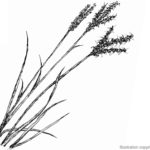Birds of Jefferson County: Accipiters
“What is that hawk who comes into my yard and eats ‘my’ birds?”
These hawks are probably Accipiters, a sub-group of the birds of prey most easily distinguished by their long tails and short, broad, rounded wings which allow them to maneuver in and out of trees. Their normal hunting ground is in the forest, but Accipiters have been loosing out to houses, commercial developments and highways. The many small birds that consititute their prey base have adapted to urban living and bird feeders, so seeing these Accipiters hunting in your back yard and nesting in urban settings is becoming more and more commonplace.
The two Accipiters most often seen in the Denver area are the Cooper’s Hawk (Accipiter cooperii) and the Sharp-shinned hawk (Accipiter striatus) – the Sharpy. If you’re in your yard and suddenly you notice that all the birds are fleeing from the feeders, and then everything suddenly gets quiet, search the trees close by. You may see a Cooper’s Hawk or Sharpy quietly sitting and waiting for some small bird to fly into harm’s way.
In my yard I have seen an Evening Grosbeak, which measures just over 7 inches tip to tail, taken by an Accipitor. I have also watched as a Cooper’s Hawk stepped into my 2″ deep birdbath and spent 15 minutes deciding whether or not to take a bath. Then he splashed about for another 30 minutes, spreading his wings and bending over sideways to bathe. The Cooper’s Hawk is about 17″ long. The Sharpy is smaller, about 12″ long, however – because the female Sharpy is larger than the male, a Sharp-shinned female can be about the same size as a male Cooper’s Hawk.
 Telling the two species apart can be difficult, the accompanying photo is representative of either species, although, by consensus of opinion, we think the Accipiter is a Cooper’s Hawk and his prey a sparrow of some sort. As adults, both are dark gray above and lighter below with buff-colored stripes on the breast. The most distinguishing feature of both species is the tail…long, wide and banded, alternating dark and light brown, with white tipping at the end. A Sharpy has a straight-edged tail with a little white at the outer end. The Cooper’s Hawk has a rounded tail with more white showing at the end. Feather wear can modify the appearance of the tail feathers, causing identification confusion. Adult birds of both species have red eyes while their youngsters have yellow eyes. Sharpys often have some white blotchy feathers on the back.
Telling the two species apart can be difficult, the accompanying photo is representative of either species, although, by consensus of opinion, we think the Accipiter is a Cooper’s Hawk and his prey a sparrow of some sort. As adults, both are dark gray above and lighter below with buff-colored stripes on the breast. The most distinguishing feature of both species is the tail…long, wide and banded, alternating dark and light brown, with white tipping at the end. A Sharpy has a straight-edged tail with a little white at the outer end. The Cooper’s Hawk has a rounded tail with more white showing at the end. Feather wear can modify the appearance of the tail feathers, causing identification confusion. Adult birds of both species have red eyes while their youngsters have yellow eyes. Sharpys often have some white blotchy feathers on the back.
In flight, the Sharpy tucks its head into its wings, while the Cooper’s Hawk extends its head – some have described a Cooper’s Hawk in flight as “a flying cross.” A Cooper’s Hawk weighs about a pound while a Sharpy weighs only about half a pound.
One day I was at my bird feeders when one came at me chasing a sparrow – couldn’t tell if it was a Cooper’s Hawk or a Sharpy, they were moving so fast. The sparrow went to my right and the Accipiter to my left. The sparrow got away. In the bird world there are predators and there are prey…don’t be too alarmed if you witness an Accipiter doing what he’s supposed to be doing at your feeder or in your yard. This is just part of the way of the wild.
Copyright © 2011 Ann Bonnell
Discover more from PLANJeffco
Subscribe to get the latest posts sent to your email.





Trackbacks & Pingbacks
[…] Birds of Jefferson County: Accipiters https://planjeffco.org/birds-of-jefferson-county-accipiters/ […]
[…] Birds of Jefferson County: Accipiters https://planjeffco.org/birds-of-jefferson-county-accipiters/ […]
Leave a Reply
Want to join the discussion?Feel free to contribute!